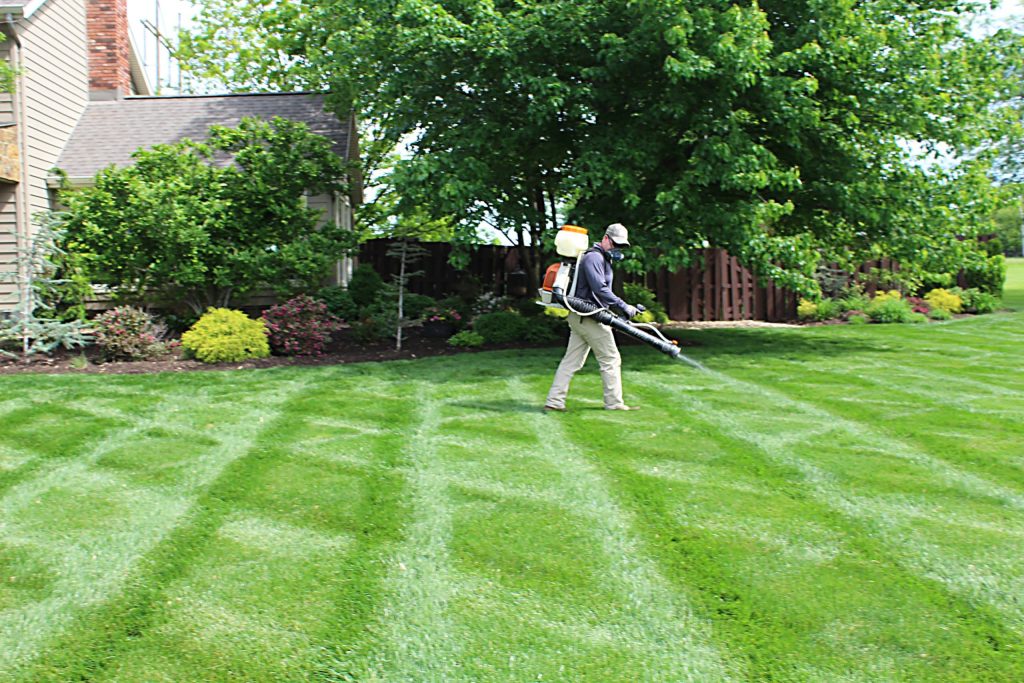A healthy lawn begins with a comprehensive understanding of its specific needs, which can vary significantly based on factors such as grass type, climate, soil composition, and local pests. Different grass species thrive under different conditions; for instance, cool-season grasses like Kentucky bluegrass flourish in northern climates, while warm-season varieties such as Bermuda grass are better suited for southern regions. To determine the best grass type for your lawn, consider conducting a soil test.
This analysis will provide insights into pH levels, nutrient content, and organic matter, allowing you to tailor your lawn care practices accordingly. In addition to grass type, understanding the microclimates within your yard is crucial. Areas that receive full sun will have different moisture and nutrient requirements compared to shaded spots.
For example, lawns in sunny areas may require more frequent watering and fertilization, while shaded areas might benefit from less intense care. Observing how sunlight moves across your property throughout the day can help you identify these microclimates. Furthermore, local weather patterns and seasonal changes should inform your lawn care strategy.
For instance, knowing when the last frost typically occurs in your area can guide you on when to start planting or applying fertilizers.
Choosing the Right Tools and Equipment
Selecting the appropriate tools and equipment is essential for effective lawn care. The right tools not only make the job easier but also ensure that tasks are performed correctly, promoting a healthier lawn. A basic toolkit for lawn maintenance should include a reliable lawn mower, trimmer, rake, and shovel.
When choosing a lawn mower, consider factors such as the size of your lawn and the type of grass you have. For smaller yards, a push mower may suffice, while larger properties might require a riding mower for efficiency. In addition to traditional mowers, there are also electric and battery-operated options that can reduce noise pollution and emissions.
Trimmers are equally important for maintaining edges and hard-to-reach areas. A string trimmer is versatile and can handle various terrains, while a hedge trimmer is ideal for shaping shrubs and bushes. Beyond these basics, investing in quality hand tools like trowels and cultivators can enhance your ability to perform detailed tasks such as planting or weeding.
Ultimately, the right tools will not only save time but also improve the overall appearance of your lawn.
Mowing and Trimming Techniques
Mowing is one of the most critical aspects of lawn care, and employing proper techniques can significantly impact the health of your grass. One fundamental principle is to mow at the correct height for your specific grass type. For instance, cool-season grasses such as Sir Grange Zoysia generally thrive when mowed to a height of 2.5 to 4 inches, while warm-season grasses prefer a shorter height of 1 to 3 inches.
Mowing too short can stress the grass and make it more susceptible to pests and diseases. Additionally, it’s advisable to follow the one-third rule: never remove more than one-third of the grass blade in a single mowing session. Another important aspect of mowing is the pattern in which you mow.
Changing your mowing pattern regularly can prevent soil compaction and promote upright growth. For example, if you mow in straight lines one week, try a diagonal pattern the next time. This variation encourages grass to grow more evenly and reduces wear on specific areas of your lawn.
Trimming is equally vital for maintaining a neat appearance; using a string trimmer around edges and obstacles ensures that no grass is left uncut. Regular trimming not only enhances aesthetics but also helps prevent weeds from taking root in those hard-to-reach areas.
Fertilizing and Weed Control
Fertilizing your lawn is essential for providing the nutrients necessary for healthy growth. The type of fertilizer you choose should be based on your soil test results, which will indicate nutrient deficiencies. Generally, fertilizers are categorized into three main components: nitrogen (N), phosphorus (P), and potassium (K).
Nitrogen promotes lush green growth, phosphorus supports root development, and potassium enhances overall plant health. A balanced fertilizer with equal parts of these nutrients can be beneficial for most lawns. Weed control is another critical component of lawn care that often goes hand-in-hand with fertilization.
Weeds compete with grass for nutrients and water, so managing them effectively is crucial for maintaining a healthy lawn. Pre-emergent herbicides can be applied in early spring to prevent weed seeds from germinating, while post-emergent herbicides target existing weeds. However, it’s essential to read labels carefully and follow application instructions to avoid damaging your grass.
Additionally, cultural practices such as proper mowing height and regular aeration can help reduce weed pressure by promoting a dense turf that outcompetes unwanted plants.
Watering and Irrigation
Watering is a fundamental aspect of lawn care and garden maintenance that directly influences grass health and resilience. The general rule of thumb is to provide about one inch of water per week, either through rainfall or irrigation. However, this can vary based on factors such as soil type and weather conditions.
Sandy soils drain quickly and may require more frequent watering, while clay soils retain moisture longer but can become compacted if overwatered. To determine when to water, consider using a rain gauge or simply check the soil moisture by digging down a few inches; if it feels dry at that depth, it’s time to water. Irrigation systems can greatly enhance your ability to maintain consistent moisture levels in your lawn.
Sprinkler systems come in various types—fixed spray heads, oscillating sprinklers, or drip irrigation systems—each suited for different lawn sizes and shapes. Installing an automatic irrigation system with timers can help ensure that your lawn receives adequate water without the need for constant monitoring. Additionally, watering early in the morning or late in the evening minimizes evaporation losses and allows water to penetrate deeply into the soil.
Aerating and Dethatching
Aeration is a crucial practice that involves perforating the soil with holes to allow air, water, and nutrients to penetrate deeper into the root zone. This process alleviates soil compaction—a common issue in lawns that experience heavy foot traffic or have clay-heavy soils—thereby promoting healthier root growth. Aeration should ideally be performed during the growing season when grass can recover quickly; for cool-season grasses, this typically means early spring or fall, while warm-season grasses benefit from aeration in late spring or early summer.
Dethatching is another important practice that involves removing excess thatch—a layer of dead grass clippings, roots, and other organic matter that accumulates on the soil surface. While some thatch is beneficial as it provides insulation and moisture retention, excessive buildup can hinder water absorption and promote disease. Dethatching can be accomplished using specialized dethatching rakes or machines that pull up this layer without damaging healthy grass beneath it.
Regular aeration combined with dethatching can significantly improve overall lawn health by enhancing nutrient uptake and promoting robust root systems.
Overcoming Common Lawn Problems
Lawn care is not without its challenges; various problems can arise that threaten the health of your grass. One common issue is pest infestations, which can range from grubs to chinch bugs. Grubs feed on grassroots and can cause significant damage if left unchecked.
Regular monitoring for signs of pest activity—such as brown patches or increased bird activity—can help you catch infestations early. Integrated pest management (IPM) strategies that combine cultural practices with targeted pesticide applications can effectively control pests while minimizing harm to beneficial insects. Another prevalent problem is disease outbreaks caused by fungi or bacteria.
Conditions such as brown patch or dollar spot thrive in warm, humid environments and can quickly spread if not addressed promptly. Maintaining proper mowing heights, ensuring adequate air circulation through aeration, and avoiding overwatering are effective preventive measures against disease development. If disease does occur, fungicides may be necessary; however, it’s crucial to identify the specific pathogen before treatment to ensure effectiveness.
Creating a Maintenance Schedule
Establishing a maintenance schedule is vital for keeping your lawn healthy throughout the year. A well-structured plan should include regular tasks such as mowing, watering, fertilizing, aerating, and pest control tailored to seasonal changes in climate and grass growth patterns. For instance, spring might focus on fertilization and weed control as grass begins to grow actively after winter dormancy.
Summer maintenance may shift towards increased watering and pest monitoring due to higher temperatures. Incorporating seasonal checklists can help ensure that no critical tasks are overlooked. For example, fall is an excellent time for aeration and overseeding to prepare your lawn for winter dormancy while promoting early spring growth.
Additionally, keeping records of when specific tasks were completed can help you refine your schedule over time based on what works best for your particular lawn conditions. By adhering to a consistent maintenance schedule tailored to your lawn’s unique needs, you can cultivate a vibrant and resilient outdoor space that enhances both aesthetics and functionality.

